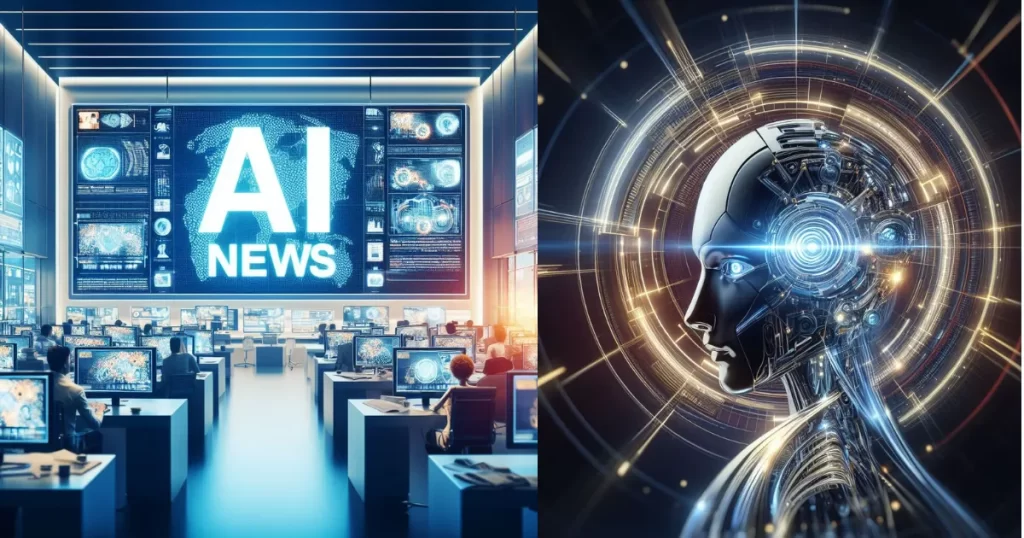Daniel Thompson, a science teacher at Ron Clark Academy in Atlanta, recently taught his sixth-grade students about weather and water. He had a one-of-a-kind assistant named Origin, a voice-activated artificial intelligence. When a student inquired about animals’ need for water, Thompson employed the AI to determine the answer. Within seconds, the smartboard displayed an image and information on kangaroo rats.
Satya Nitta, a former IBM employee and computer scientist, built Origin, the AI helper. At IBM, Nitta attempted to create an AI that could educate students directly using IBM Watson, the AI recognized for winning “Jeopardy!” However, after five years and $100 million, IBM recognized the technology was not suitable for teaching. Nitta then established Merlyn Mind and created Origin to help instructors rather than replace them.
Since OpenAI introduced ChatGPT in November 2022, several AI technologies have entered the educational space. These artificial intelligence programs, known as chatbots, employ vast language models to analyze student inquiries and deliver useful replies. Some AI applications, such as Writable and Photomath, are subject-specific, whilst others, such as Google’s Socratic and Khan Academy’s Khanmigo, provide broad coaching.
Despite these developments, scientists believe AI will not be able to completely replace teachers. While AI may assist with activities like as creating quizzes and summarizing texts, it fails to engage and motivate students, which are key components of good teaching. Nitta underlines that human teachers can immediately recognize and correct pupil misunderstanding or indifference, something AI cannot do well.
AI’s best job in education is to assist instructors. Origin, for example, enables teachers to communicate with students more directly by managing digital instructional materials via voice commands. This allows teachers to wander throughout the classroom and interact with all pupils, including those who are trying to escape attention.
Thompson commands the AI at Ron Clark Academy with a remote control equipped with a microphone. During a class, he instructed the AI to establish a timer, provide drawings, and locate informative movies. This interactive technique helps students stay interested and reinforces their learning.
Research indicates that student participation is critical for academic performance. While AI has certain advantages, it isn’t very good at keeping pupils motivated in things that they don’t enjoy. During experiments using IBM’s Watson, kids frequently ignored attempts to engage them.
Khan Academy’s Khanmigo, created in collaboration with OpenAI, adopts a different approach. Rather than providing clear answers, it asks pupils questions to help them find solutions. This strategy seeks to assist pupils when they are stuck by offering ideas and encouragement.
While AI solutions like Khanmigo show potential, the engagement gap between AI and students remains an issue. Khan Academy intends to publish statistics on Khanmigo’s success, although full third-party reviews are still required.
Saga Education, a non-profit, is also investigating AI’s potential in increasing student engagement. Saga uses AI to analyze tutoring sessions and gives instructors with insights on how to better prompt and engage pupils. This input has resulted in more fruitful tutoring sessions.
Experts believe that while AI will play an increasingly important role in education, it will never totally replace human instructors. AI can provide feedback and assistance, but it lacks the true concern and connection that human teachers bring. According to Brown University professor Michael Littman, the human interaction component of learning is extremely valuable, and eliminating humans would reduce education’s efficiency.
To summarize, AI may improve teaching by aiding and supporting instructors, but it cannot replace the critical human component of education.
Original Source: This article is based on content from The Hechinger Report, a nonprofit, independent news organization focused on inequality and innovation in education. You can check out the full article here.

I’m Voss Xolani, and I’m deeply passionate about exploring AI software and tools. From cutting-edge machine learning platforms to powerful automation systems, I’m always on the lookout for the latest innovations that push the boundaries of what AI can do. I love experimenting with new AI tools, discovering how they can improve efficiency and open up new possibilities. With a keen eye for software that’s shaping the future, I’m excited to share with you the tools that are transforming industries and everyday life.

